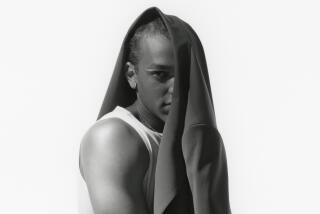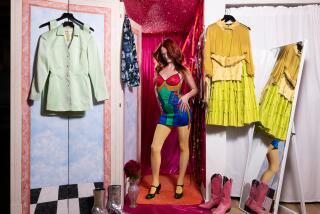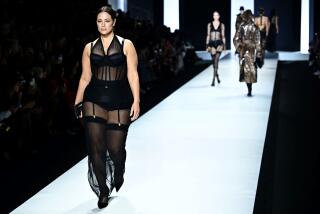Consumers Seek a Fitting Standard for Buying Clothes : Retailing: Despite quality control, sizes may vary among brands--and within them too.
- Share via
Why is it that you can buy a Size 8 skirt from a company one day and six months later need a Size 10, when you haven’t gained a pound?
First of all, it is not because your body is any more flawed.
Even models have to try on dozens of jeans to get a good fit, as an investigation by W magazine discovered.
Their researchers found no consistency between brands in sizes; even within brands, the Size 8s all fit differently. W’s leggy 5-foot-9 model found nearly all the jeans too long, and one of the best lengths for her turned out to be a pair of Calvin Klein Petites.
The problem, explains retailer Sally Wolf, is that “every manufacturer cuts differently. I think they try to be consistent, but it’s almost impossible.”
There is very little incentive for manufacturers to share the secret to their fit.
“Clothing manufacturing is a very competitive industry,” says Wanda Sieben, an apparel quality researcher at the University of Minnesota. “They differentiate their product from others not just in matters of style and fabric, but on fit. People can be very loyal to a brand just because of its fit.”
In addition, she points out, quality control is everything: “All garments are not cut uniformly, and there can be variations in the sewing.”
Fit is becoming more of an issue with consumers.
“A few years ago, everything was so oversized and loose--with the long top and full skirt--that anybody from a Size 4 to 14 could often wear the same size,” says retailer Sally Jones, owner of Jones & Jones in Baltimore.
Then there’s also the question of getting the best return on one’s fitness investment. “So many women are taking better care of themselves,” retailer Sally Wolf says, “that they want to get the best fit they can.”
Retailers are helping customers in a variety of ways.
“We try to carry different lines to fit different shapes,” says Jones. But as a retailer noted for her fashion edge, she must also at times carry lines that won’t fit everybody, for the sake of a great new look.
One line especially good for all sizes, she says, is Helen Hsu. “They’re wonderful contemporary knits that work for career and travel. They don’t cling, and the patterns are cut to make you look slimmer.”
Hilda Levin, sportswear buyer for Miller Brothers, says: “The reason Eleanor P. Brenner is one of my major resources is because she seems to fit everybody. She’s one of those manufacturers who make women feel sexy and tall. And her Size 4 is a true Size 4.”
Another line successful because of fit is Michi Moon. Although sizes are not necessarily “true” sizes, Levin says, these clothes are “cut generously. I normally wear a Size 8, but in her I take a Size 6.”
When a line is not consistent in sizing, she tends to drop it. “If you’ve been a Marc D’Alcy customer and you wore a Size 8 before and now you have to wear a Size 10--it’s a turnoff. Even myself, and I’m a buyer, I get uptight if I have to put on a Size 10.”
Good fit does not always come with higher prices. In Sieben’s study of jeans, the more expensive jeans were not more accurately sized.
Designer priced clothes can, however, buy you a larger fit. Jones estimates that true “designer” clothes, i.e. those priced $500 and higher, “are at least a size larger” than bridge labels.
Style makes a difference.
“Designers at the upper end are sometimes not terribly consistent in size because styles vary so much from season to season,” says Nan Kaestner, Fifth Avenue Club shopper for Saks Fifth Avenue. “This year they might do a very fitted jacket and you’ll need a 10, but another year, in a boxy style, you might need a Size 8.”






